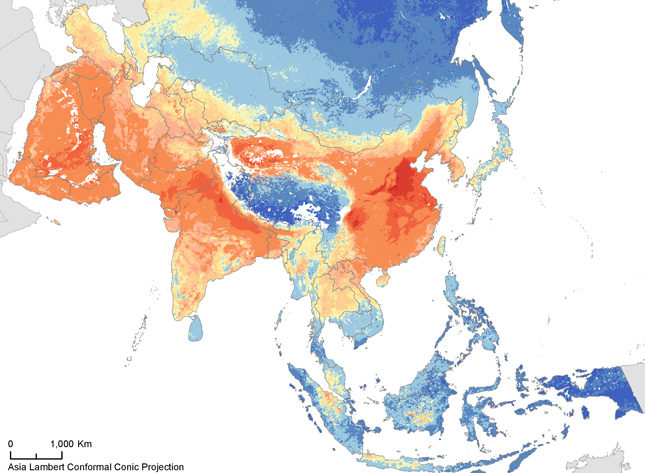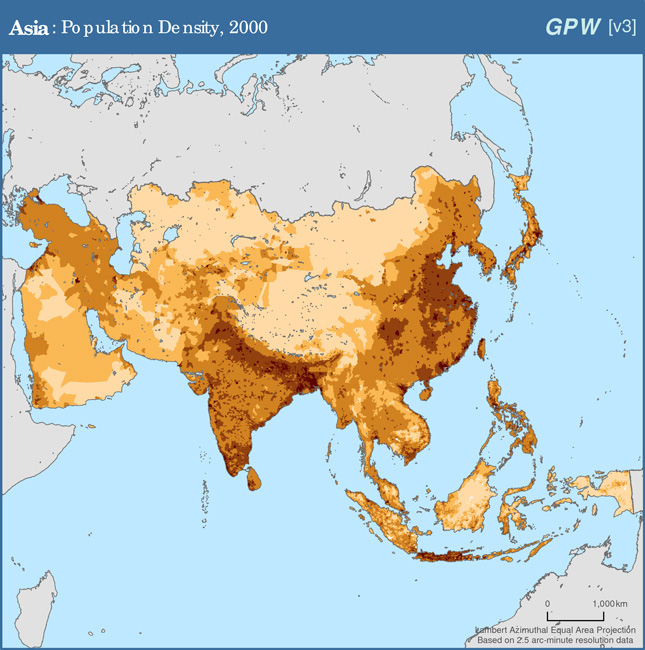-
Measuring the SDGs: Investments in Mapping, Geospatial Data Collection Critical to Success
May 5, 2015 By Alex FischerTo ensure no one is left behind by the next generation of global development goals, a comprehensive mix of robust data is needed to measure progress and guide investments. A recent report coordinated by the Sustainable Development Solutions Network estimates the world will need to spend roughly $1 billion a year to sustain and enhance the statistical systems supporting and evaluating progress towards the Sustainable Development Goals (SDGs), the successors to the Millennium Development Goals expected to guide the development agenda for the next 15 years.
The world will need roughly $1 billion a year to sustain and enhance statistical systems for the SDGsThe report, Data for Development: A Needs Assessment for SDG Monitoring and Statistical Capacity Development, proposes a typology of data systems and the estimated costs to measure and generate this data for 77 developing countries. The price tag may seem like a lot, but it’s less than one percent of current estimated expenditures on overseas development assistance budgets and national government expenditures and far below the percentage of revenue private companies invest in their monitoring and research departments. To meet this minimum level, we estimate donors would need to maintain their current average investment of $300 million a year towards statistical systems and go further, leveraging up to $200 million in additional development assistance to support country efforts. National governments would also need to sustain, if not increase, their annual budgetary allocations.
Within the proposed data typology, one of our recommendations is to formalize geospatial information as part of data collection architecture. Geospatial tools complement traditional data systems such as census data, administrative data, household survey data, vital statistics, and economic data. The report notes that roughly a quarter of the proposed SDG indicators require geospatial data and by geotagging other data, almost all could be visualized to monitor progress across spatial scales.
From infrastructure to environmental and socioeconomic features, the ability of geospatial tools to provide location-specific information can enable valuable insights into the distribution of needs and how to optimize development investments and planning. Policymakers can track poverty rates across regions or monitor incidence rates and hotspots of diseases, whether endemic, such as malaria, or an outbreak, like the recent Ebola crisis in West Africa. Investors can use spatially defined infrastructure and population data to understand existing service coverage and opportunities for future investment. Citizens can use mobile devices to find their closest public transportation options, government offices for voter registration, or schooling options. And integrating geospatial data with household surveys, like demographic and health surveys, can enable disaggregation and analysis by spatial characteristics, such as proximity to roads, health clinics, public transportation, or levels of urban development.
Taking Inventory, Creating Capacity
As such, one of the report’s key recommendations is to integrate geospatial information infrastructure and data collection into official reporting systems. To do this, we suggest developing countries invest in small, core geospatial divisions, ensuring adequate human capacity, equipment, and software and policy frameworks. These core divisions would maintain a national inventory of core data, from administrative boundaries to national transportation and topography data. Governments would also systematically inventory and map critical national facilities and infrastructure, such as schools, health clinics, water systems, irrigation systems, waste treatment facilities, agricultural facilities, tourism facilities, and public transportation.
Most countries only have open access to low-resolution satellite imageryThe report also suggests the global community ensure that aid-recipient countries are able to access and utilize affordable, national-scale, moderate- to high-resolution satellite imagery on a regular basis. Currently, most countries only have open access to low-resolution imagery, as higher resolution imagery can be cost prohibitive.
Finally, pairing geospatial data and remote sensing with ground monitoring is especially important for efforts to address environmental and public health problems. Recent research by Ashok K. Mishra and Paulin Coulibaly found a global decline in the number of functioning, on-site river monitoring stations. We articulate what it would take for a concerted effort to reverse this trend, offering perspective on the benefits to expanding water and air quality monitoring stations, especially for urban areas.
Innovations in mapping technology and geospatial data collection can help make the SDGs more successful and targeted than the MDGs. They also have the potential to illustrate needs and success in a much more understandable way. But it will take investment. The global community is in a position to make it happen – to ensure that every country has the data and tools to visualize key socio-economic and environmental data down to the smallest administrative units, to more accurately direct aid and development resources and ensuring no one is left behind.
Download the full report at the Sustainable Development Solutions Network. The Sustainable Development Solutions Network coordinated expert input into the report in partnership with Open Data Watch, Paris 21, Simon Frasier University, the Overseas Development Institute, UNESCO, UNIDO, UNICEF, the World Bank, and our team at CIESIN.
Alex Fischer works on sustainable development and data systems within the context of states afflicted with fragility, most recently in Haiti, Lebanon, and Sierra Leone, at the Earth Institute’s Center for International Earth Science Information Network (CIESIN). He is an associate faculty member at Columbia University’s Environment, Peace, and Security Seminar.
Sources: American Geophysical Union, Sustainable Development Solutions Network.
Image Credit: CIESIN.
 A Publication of the Stimson Center.
A Publication of the Stimson Center.





